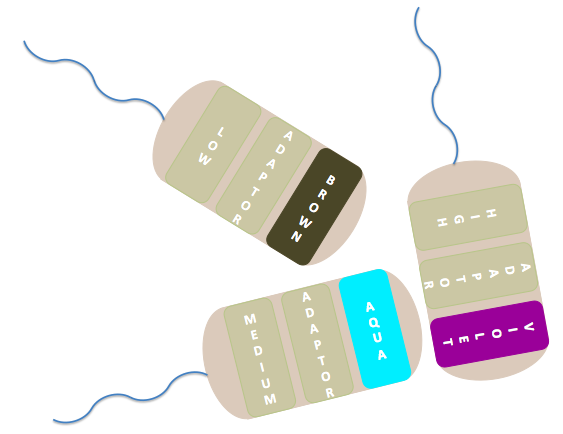Team:Cambridge
From 2009.igem.org
| Line 15: | Line 15: | ||
Thus, we can develop a population of mixed strains of bacteria. The concentration of the inducer to which they are exposed determines which strains are activated to produce pigment. | Thus, we can develop a population of mixed strains of bacteria. The concentration of the inducer to which they are exposed determines which strains are activated to produce pigment. | ||
| - | [[Image: | + | [[Image:mix2.jpg]] |
<!--Do not remove the first and last lines in this page!--><div id="contentbox_bottom"></div></div> | <!--Do not remove the first and last lines in this page!--><div id="contentbox_bottom"></div></div> | ||
Revision as of 12:29, 31 July 2009
Categories :
Project :
-
Overview
Sensitivity Tuner
--- Characterisation
--- Modelling
Colour Generators
--- Carotenoids (Orange/Red)
--- Melanin (Brown)
--- Violacein (Purple/Green)
The Future
Safety
Notebook :
Team Logistics :
Overview
Previous iGEM teams have focused on genetically engineering bacteria to respond to novel inputs – for example light, or biologically significant compounds. There is an unmistakable need, therefore, to also develop clear, user-friendly outputs, especially for use with biosensors. The most popular output is the expression of a fluorescent protein, detectable using fluorescence microscopy. However, how much easier would it be if we could simply see the output with our own eyes?
The Cambridge 2008 iGEM team is engineering E. coli to produce different pigments in response to different concentrations of an inducer. Our device is a three part system:
Sensor: Our sensor system is sensitive to different concentrations of an inducer.
Adaptor: The adaptor is an amplifier; its role in the system is to ensure large-scale production of the genes necessary for pigment production no matter the Pops input from the sensor. This amplification acts as an "on" switch to guarantee maximum pigment production even with low level input.
Colour: Pigment production
Thus, we can develop a population of mixed strains of bacteria. The concentration of the inducer to which they are exposed determines which strains are activated to produce pigment.
 "
"

